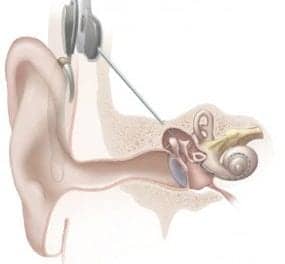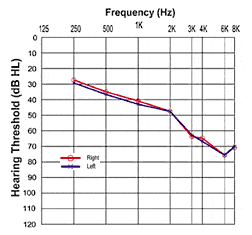Market Research | June 2022 Hearing Review
Better listening in noise looms large for satisfying hearing aid users–especially older clients.
By Jennifer Appleton-Huber, MChem, MSc
What are the major drivers of customer satisfaction with hearing aids? Almost all surveys emphasize the importance of hearing speech in noise. Recent consumer surveys also indicate that the main drivers of hearing aid satisfaction are sound quality or hearing aid performance over their satisfaction with the hearing care professional (HCP) or hearing aid physical qualities. Listening situations most important to hearing aid users for speech understanding are: 1:1 conversations and group conversations in noise, soft speech in quiet, understanding speech without visual cues, and speech at a distance.
Hearing aid manufacturers and hearing care professionals devote a huge amount of their resources on products and services that designed to provide optimal outcomes and satisfaction to the clients of hearing care professionals (HCPs). But what do these clients really value relative to hearing aid features and benefits, and how well are we actually satisfying their most important hearing needs? This article looks at some recent well-documented consumer surveys on customer satisfaction with hearing aids, and adds some important points drawn from new research conducted by Sonova.
What Do MarkeTrak & EuroTrak Say?
MarkeTrak 2019 findings. The MarkeTrak 10 survey was conducted in 2019, surveying 20,072 households in the United States on health matters, and from this, recruited 3,132 individuals with hearing difficulty to gain further insights into hearing healthcare and hearing aids (for an overview, see Powers & Rogin1 and Picou2). A total of 969 hearing aid owners were surveyed. When questioned about hearing aid satisfaction drivers, hearing aid performance in quiet and in noise and sound quality were found to have the biggest impact on hearing aid satisfaction. The top contributors to this hearing aid performance for sound quality were the ability to tell direction, natural sounding, rich sound, minimizes background sound, and clear tone.
The next most important factor was the effectiveness of the HCP. Other factors which played a role in hearing aid satisfaction were hearing aid physical qualities, such as appearance and size, hearing aid maintenance including cleaning care and battery changing, and lastly, financial costs.
Hearing aid owners were then asked how satisfied they were with their hearing aid(s) in each listening situation from a given list. Participants with hearing loss or hearing difficulty who did not own hearing aids (n=2,163) were asked to indicate how satisfied they were with their ability to hear in each given listening situation. Owners of hearing aids were found to be more satisfied with their hearing ability than non-owners of hearing aids across all listening situations. When looking specifically at which situations hearing aid owners had the least satisfaction, they indicated:
- Conversations in noise;
- Talking on a traditional telephone;
- Listening in a classroom or lecture hall (hearing over distance), and
- Conversations in large groups.
EuroTrak findings. EuroTrak Germany 20183 surveyed 536 hearing aid owners and 766 hearing-impaired non-owners, while EuroTrak UK 20184 surveyed 698 hearing aid owners and 602 hearing-impaired non-owners. When hearing aid owners were asked which factors influenced their satisfaction with their current hearing aid, sound quality or signal processing came out on top above dispenser/HCP or hearing aid features, such as battery changing—making the findings congruent with those from MarkeTrak 10.
Hearing aid owners were then asked how satisfied they were with their hearing aids in a range of listening situations.
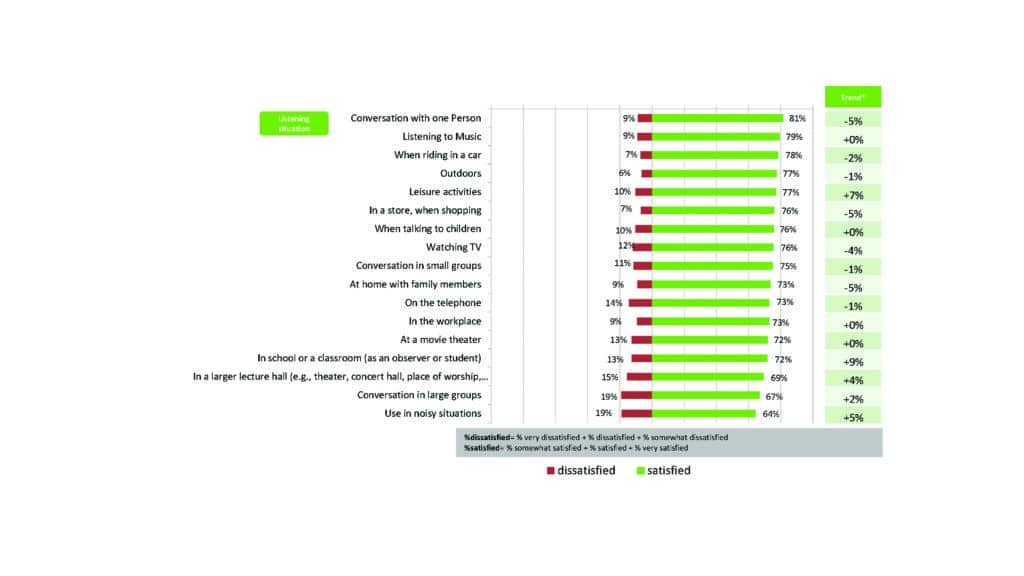
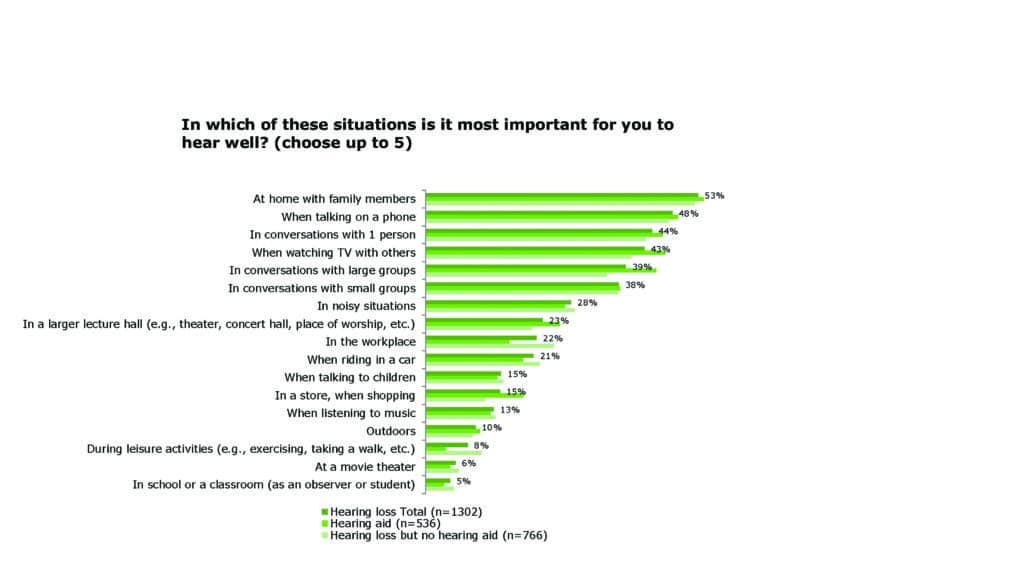
Figure 2. EuroTrak 2018 responses to the question, “In which of these situations is it most important for you to hear well (choose up to 5)?” Listening situations ranked in order of importance for being able to hear well by participants (n = 536). Source: Anovum, EuroTrak Germany 2018.
Figure 1 shows the these results and Figure 2 shows the results of when the hearing aid owners were asked in which situations it was most important for them to be able to hear well. Both figures are from the EuroTrak Germany 2018 survey, but the order (which listening situations they were most satisfied in and which listening situations they found most important) was very similar to the UK survey. Situations ranked most important included:
- At home with family members;
- Talking on the phone;
- Conversations with one person;
- Watching TV;
- Small groups and large groups, and
- In noise.
Note that one-on-one conversations were rated highest in satisfaction with hearing aid use in Figure 1. In contrast, other highly ranked important listening situations were ranked lowest for satisfaction, such as conversation in large groups and in noisy situations. Findings from the UK survey were similar. These results give a clear indication about where improvements are needed in the hearing aid solutions.
In a retrospective study by Manchaiah et al,5 preferences for hearing aid attributes were evaluated by consumers who answered questions in the “Help Me Choose” tool on the HearingTracker.com website. A total of 2,110 hearing aid owners completed the online survey. Figure 3 shows the analysis of which attributes were rated as “extremely” or “very” important when purchasing a hearing aid. The attributes of hearing in noise, hearing in quiet, and hearing on the phone are attributes that were also ranked high in importance in the EuroTrak 2018 surveys.
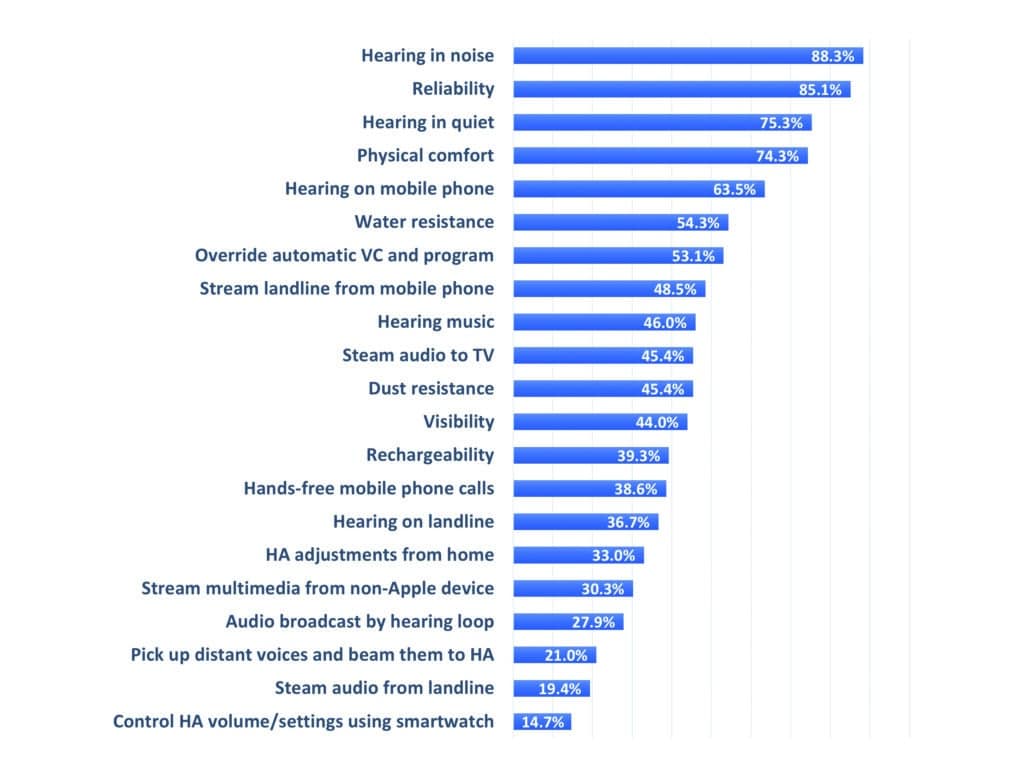
Figure 3. Analysis of hearing aid attributes rated as “extremely” or “very” important when purchasing a hearing aid. Attributes deemed to be most important are at the top. Source: Consumer survey on hearing aid preferences, benefit, and satisfaction. Adapted from a presentation at April 2021 AAA AudiologyNOW! virtual conference by Erin M. Picou & Vinaya Manchaiah.5
Perceptions about Sound Quality and Speech Intelligibility
The above surveys identify hearing aid performance and sound quality as the largest contributing factors to satisfaction with hearing aids, and some listening situations have already been deemed as being most important for hearing aid owners. Phonak wanted to investigate further consumer perceptions about sound quality and speech intelligibility as they obviously play vital roles in hearing aid satisfaction.
In 2020, Knorr conducted online interviews with 766 people with hearing loss, with each interview lasting 7-13 minutes [internal market research, Hanna Knorr, Sonova, Zürich, Switzerland].6 Half (50%) of these participants had no hearing aids and half had a mix of hearing aid brands not older than six years. Participants lived in Germany or the United States, and half were male, half female. The distribution of ages was: 10% age 40-49 years; 35% age 50-59 years; and 55% age 60 years or older.
For participants with hearing aids, the majority reported that they were satisfied with the work of their HCP and that they needed up to three appointments until they reached satisfaction with their devices. This number of appointments was in line with the expectations of the majority of participants. It also corresponds well with MarkeTrak VIII7 (2011) which shows that, once a patient exceeds three office visits, the chances plummet for favorable HCP service ratings.
For the 383 participants with hearing aids, the majority (69%) reported being satisfied with their hearing aids. This overall satisfaction was highly correlated with satisfaction with speech understanding (69% of participants) and sound quality (71% of participants).
Phonak wanted to investigate further the drivers of speech understanding and sound quality to better understand what their clients wanted to hear better. In order to understand this question, Sonova conducted an online survey in which the participants were presented with different aspects of sound quality and speech intelligibility, and had to select the most and least important factors for them. The result was an importance score that adds up to 100 for every respondent over all 20 items.

Figure 4. Average results across all participants in the 2020 Knorr study6—people with hearing loss who were users and non-users of hearing aids—separated into the three age groups, when asked repeatedly for the most and least important factors regarding sound quality and speech understanding. Red diagonal lines show where the importance of that factor has increased with age.; blue diagonal lines show where the importance of that factor has decreased with age. The numbers on the right show the average results across the 383 participants with hearing aids when asked repeatedly for the most and least important factors when it comes to sound quality and speech understanding. Importance scores add up to 100 for every respondent for 20 factors.
The numbers on the right of Figure 4 indicate the importance scores averaged for all participants. The figure is grouped so the most important factors are at the top and the least important factors are at the bottom. Note that all factors associated with speech understanding are rated as more important than the factors associated with sound quality. The factors rated most important are speech:
- Understanding over distance;
- 1:1 conversation in a noisy environment;
- Conversations without seeing visual cues;
- Soft speech in quiet, and
- Group conversation in a noisy environment such as a restaurant.
These findings correspond (Figure 6) quite well with findings from EuroTrak 2018 which also found that 1:1 conversations, conversations in groups, and hearing in noise were amongst the most important ranked listening situations. When the 383 participants with hearing loss and no hearing aids were asked the same question, their ranking of important factors was very similar to those of the hearing aid owners.
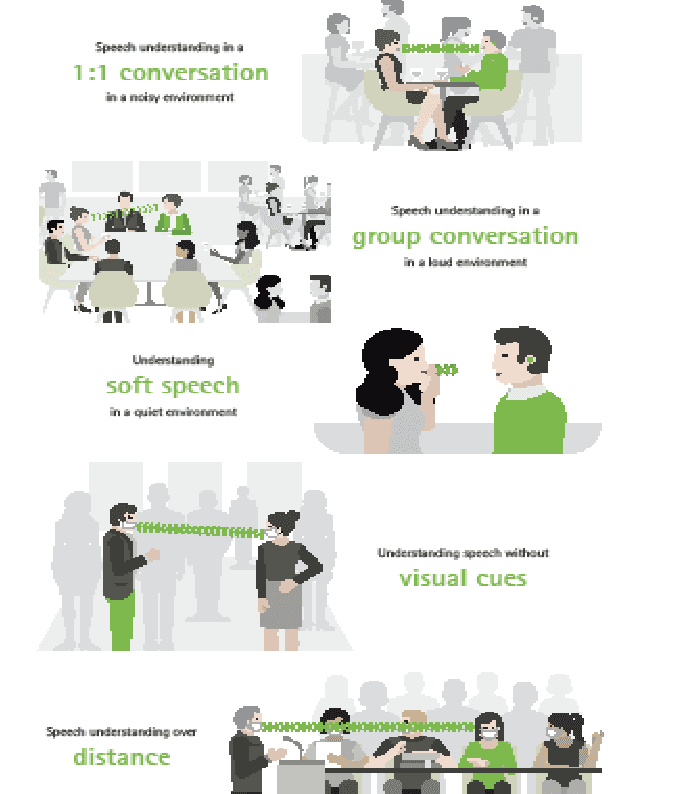
Figure 6. What’s important to your clients? In a recent survey, hearing aid owners identified these five speech understanding factors as the most important when using their hearing aids.
Is age an important influencer in these factors? Figure 4 shows, in comparison to younger participants, the older participants rated the speech understanding factors even more important than sound quality.
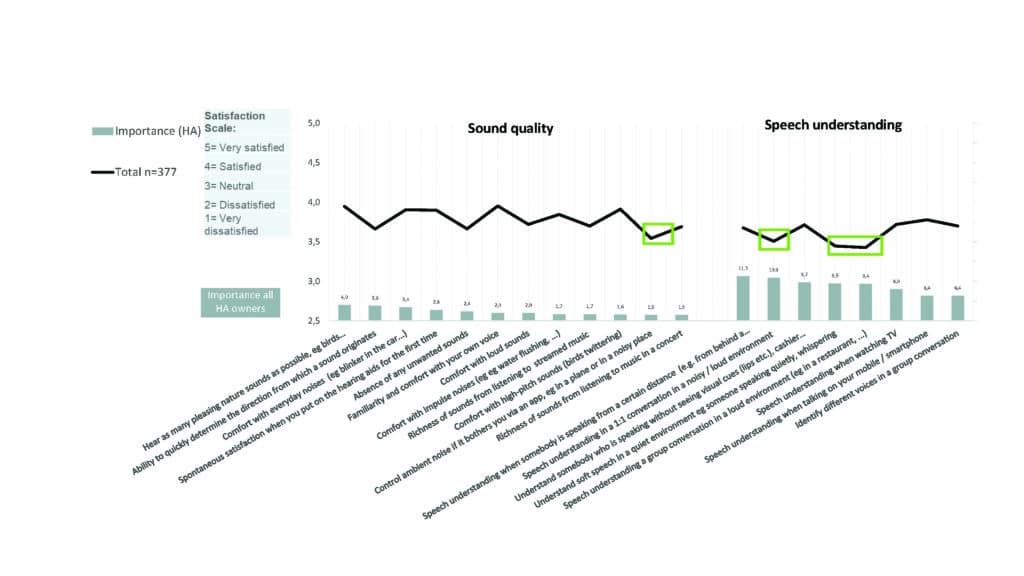
Figure 5. Satisfaction with ability to hear in listening situations versus how important that listening situation is. Importance is ordered from left to right for sound quality and speech understanding (left most important, right least important). Green boxes highlight the situations with the lowest satisfaction scores. Source: Knorr 2020.6
Hearing aid owners were then asked how satisfied they were with these 20 different factors when using their hearing aids (Figure 5). The sound quality factor with the lowest satisfaction score was “control of ambient noise via an app, eg, when in a plane.” The speech understanding factors with the lowest satisfaction scores were:
- Understanding speech in a 1:1 conversation in a noisy place;
- Understanding speech in a quiet environment, and
- Group conversation in a noisy environment.
It is noteworthy that the three speech understanding factors with the lowest satisfaction scores were ranked in the Top 5 most important listening situations for hearing aid users (eg, see Figure 2). It is also worth noting that these situations with the lowest-ranked satisfaction score correlate well with findings from MarkeTrak 10 and EuroTrak 2018 Germany and UK where listening situations with least satisfaction included following conversations in noise and conversations in large groups.
This indicates where hearing aid manufacturers should continue to make improvements to increase users’ overall satisfaction with their hearing aids, while HCPs should continue to follow best practice protocols and conduct speech-in-noise tests while validating maximum communication ability in noisy settings.
An analysis of the correlation between importance and versus satisfaction revealed that factors which have a positive impact on hearing aid satisfaction for sound quality and speech understanding were:
- Higher performance level of the hearing aids (significant difference, see black, red, and green lines in Figure 7);
- Newer hearing aids, and
- Capability for user to control their hearing aids (eg, by making adjustments in an app or by streaming music).
Degree of hearing loss was not a significant factor.
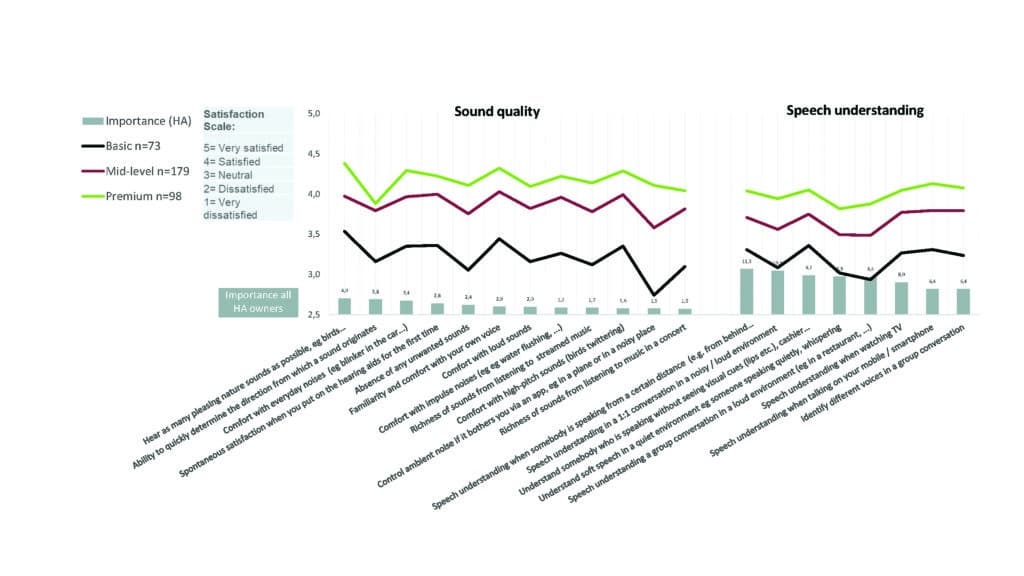
Figure 7. Satisfaction with ability to hear in listening situations separated into three levels of hearing aid performance (black = basic, red = mid-level, green = premium ) versus rated importance of the listening situation. Source: Knorr 2020.6
Conclusion
The hearing performance and sound quality survey from Phonak6 found that speech understanding is more important to clients than sound quality, and this becomes even more the case with age. Clients rate the most important speech understanding factors to be 1:1 conversations in noise, group conversations in noise, soft speech in quiet, speech without visual clues, and hearing speech at a distance (see Figure 6). The first three also happen to be the factors ranked worst for hearing aid satisfaction by the survey participants. The same three listening situations also featured in the results from MarkeTrak 10, EuroTrak 2018, and HearingTracker as either being ranked as very important listening situations or as being situations where hearing owners were least satisfied, or in some cases both.
This underscores what hearing aid manufacturers and HCPs should focus on when developing technology and fitting hearing aids. Factors found to positively influence a user’s satisfaction in these important aspects were a higher hearing aid performance level, newer hearing aids, and interactions with technology (eg, via an app of streaming music).
The surveys reported here indicate that HCPs have a crucial role in improving their clients’ satisfaction with their hearing aids. By listening to their clients, observing best practices, and sourcing and updating technology which enhances speech understanding in a range of listening situations, they contribute to improvements in the overall well-being and satisfaction of their clients.
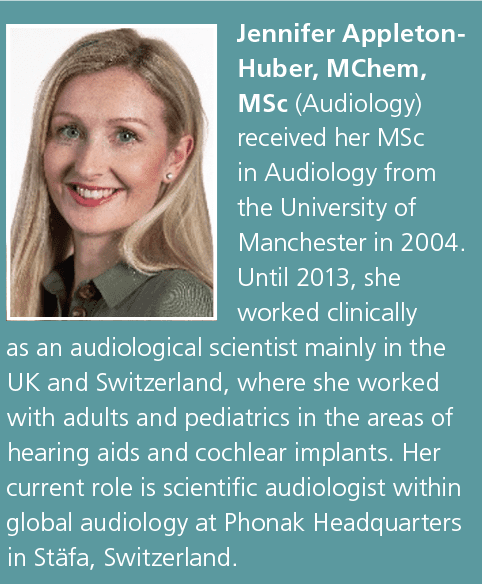
Correspondence can be addressed to HR or Appleton-Huber at: [email protected].
Citation for this article: Appleton J. What is important to your hearing aid clients… and are they satisfied?. Hearing Review. 2022;29(6):10-16.
References
- Powers TA, Rogin CM. MarkeTrak 10: Hearing aids in an era of disruption and DTC/OTC devices. Hearing Review. 2019;26(8):12-20.
- Picou EM. MarkeTrak 10 (MT10) survey results demonstrate high satisfaction with and benefits from hearing aids. Semin Hear. 2020:41(1);21-36.
- European Hearing Instruments Manufacturers Assn (EHIMA), Anovum. EuroTrak Germany 2018. https://www.ehima.com/wp-content/uploads/2018/06/EuroTrak_2018_GERMANY.pdf.
- European Hearing Instruments Manufacturers Assn (EHIMA), Anovum. EuroTrak UK 2018. https://www.ehima.com/wp-content/uploads/2021/02/EuroTrak_2018_UK.pdf.
- Manchaiah V, Picou EM, Bailey A, Rodrigo H. Consumer ratings of the most desirable hearing aid attributes. J Amer Acad Audiol. 2021:32(8):537-546.
- Knorr H. Market Research ID #4373. Zurich, Switzerland: Sonova;2020. For details, contact [email protected].
- Kochkin S. MarkeTrak VIII: Reducing patient visits through verification and validation. Hearing Review. 2011;18(6):10-12.




